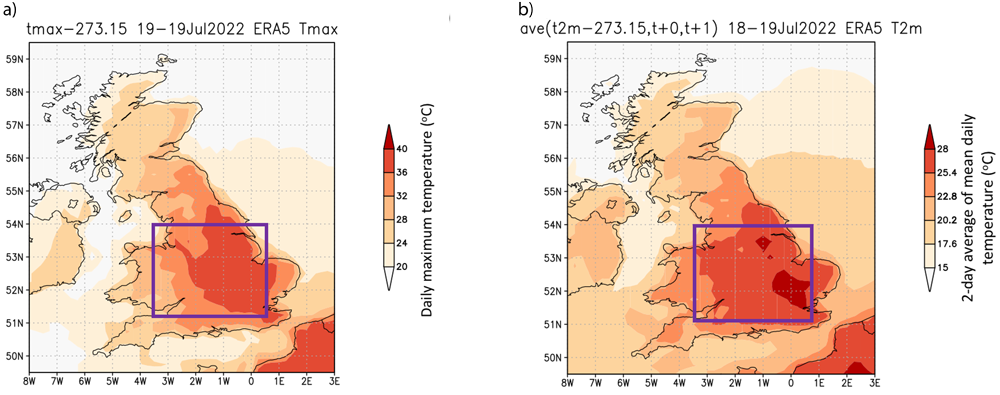On Tuesday, 40.3°C was reached in Coningsby in Lincolnshire, breaking the previous maximum temperature record of 38.7°C set in 2019. Local records have been broken in 46 stations across the country. Minimum temperatures were also extremely high with 25.8°C provisionally being recorded in Kenley in Surrey, breaking the previous record from 1990 by 1.9°C.
The heatwave was very well forecast, and the UK Met Office issued severe weather warnings well ahead of the heat. A Level 4 UK Health Security Agency Heat Health Alert had been issued for Monday and Tuesday. This level of alert is used when a heatwave is so severe and/or prolonged that its effects extend outside the health and social care system. At this level, illness may occur among the fit and healthy, not just in high-risk groups.
Scientists from South Africa, Germany, France, Switzerland, New Zealand, Denmark, United States of America and the United Kingdom, collaborated to assess to what extent human-induced climate change altered the likelihood and intensity of the heatwave.
Using published peer-reviewed methods, we analysed how human-induced climate change altered the likelihood and intensity of this heat wave in the region of the red alert warning (see Figure 1). To capture the duration of the event as well as the record temperatures we look at maximum temperatures as well as the highest 2-day averages observed.

Main findings
- The 2022 heatwave is estimated to have led to at least 13 deaths from drowning, it brought challenging conditions for the NHS with a spike in emergency calls, and care services supporting the elderly and vulnerable were put under increased stress, with a likely increase in heat related deaths. The impacts were unequally distributed across demographics. Even within London, there are high levels of inequity in experienced temperatures, with certain, often poorer neighbourhoods, lacking green space, shade, and water which can be lifelines during heatwave.
- While Europe experiences heatwaves increasingly frequently over the last years, the recently observed heat in the UK has been so extreme that it is also a rare event in today’s climate. The observed temperatures averaged over 2 days were estimated to have a return period of approx. 100 years in the current climate. For the 1-day maximum temperatures over the region shown in Figure 1 the return time is estimated at 1 in 1000 years in the current climate. Note that return periods of temperatures vary between different measures and locations, and are therefore highly uncertain.
- At three individual stations the 1-day maximum temperatures are as rare as 1 in 500 years in St James Park in London, about 1 in 1000 years in Durham and only expected on average once in 1500 years in today’s climate in Cranwell, Lincolnshire.
- The likelihood of observing such an event in a 1.2°C cooler world is extremely low, and statistically impossible in two out of the three analysed stations.
- The observational analysis shows that a UK heatwave as defined above would be about 4°C cooler in preindustrial times.
- To estimate how much of these observed changes is attributable to human-caused climate change we combine climate models with the observations. It is important to highlight that all models systematically underestimate the observed trends. The combined results are thus almost certainly too conservative.
- Combining the results based on observational and model analysis, we find that, for both event definitions, human-caused climate change made the event at least 10 times more likely. In the models, the same event would be about 2°C less hot in a 1.2°C cooler world, which is a much smaller change in intensity than observed.
- This discrepancies between the modelled and observed trends and variability also hinders confidence in projections of the future trends.
- Heatwaves during the height of summer pose a substantial risk to human health and are potentially lethal. This risk is aggravated by climate change, but also by other factors such as an ageing population, urbanisation, changing social structures, and levels of preparedness. The full impact is only known after a few weeks when the mortality figures have been analysed. Effective heat emergency plans, together with accurate weather forecasts such as those issued before this heatwave, reduce impacts and are becoming even more important in light of the rising risks.





